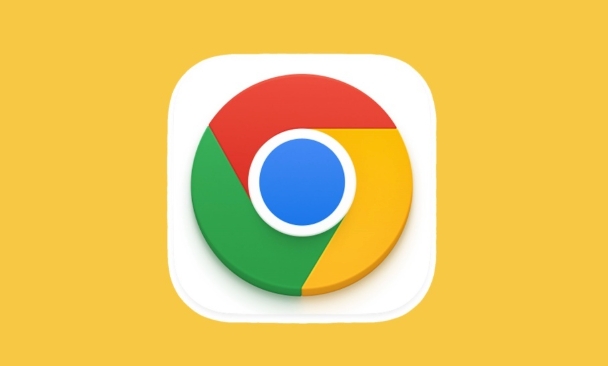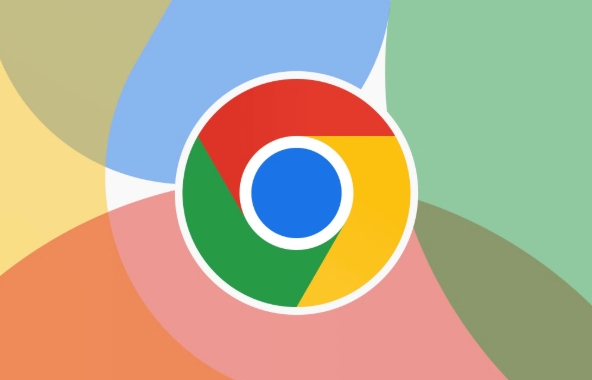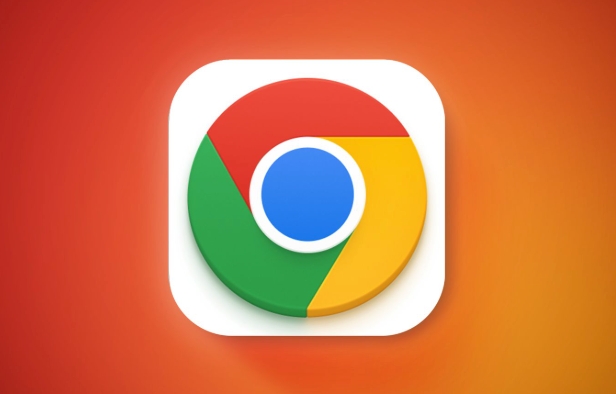The "Aw, Snap!" error is usually caused by website problems, browser extension interference, outdated Chrome versions or insufficient system resources. It can be solved by the following steps: 1. Check whether it is a problem with the website itself, try to refresh the page, use other browsers, or wait for a while; 2. Exclude extensions or set interferences, use traceless mode to test and troubleshoot the extensions one by one; 3. Update the Chrome version and clear cached data; 4. Turn off hardware acceleration and check the system resource usage. Trying one by one in sequence usually solves the problem.

The "Aw, Snap!" error in Chrome means the browser couldn't load a webpage properly — it's basically Chrome's way of saying something went wrong while trying to display a site. It doesn't tell you exactly what went wrong, which can be frustrating. The issue could come from your internet connection, the website itself, or even your browser settings.

Here are some common causes and how to deal with them:
1. Problem with the Website Itself
Sometimes, the page you're trying to load is the issue. The server might be down, or there could be a temporary problem on their end.

- Try reloading the page once or twice.
- Open the site in another browser (like Edge or Firefox) to check if the issue is specific to Chrome.
- If it still doesn't work, wait a bit and try again later.
If other people are also reporting issues with the site, it's likely not on your end.
2. Browser Extensions or Settings Interfering
Certain extensions or settings in Chrome can interfere with how pages load — especially ad blockers, privacy tools, or scripts that modify web content.

You can test this by:
- Opening Chrome in Incognito mode (which disables most extensions).
- Trying the page again — if it loads fine there, an extension is probably causing the problem.
To find out which one:
- Disable all extensions first.
- Re-enable them one by one while testing the page after each.
Also, check if any content settings (like JavaScript being blocked) are preventing the page from loading correctly.
3. Outdated Chrome Version or Corrupted Cache
Running an outdated version of Chrome or having corrupted cached data can cause unexpected errors like “Aw, Snap!”
Try these steps:
- Update Chrome to the latest version.
- Clear browser data: go to Settings > Privacy and Security > Clear Browsing Data , and select Cached images and files .
- Restart Chrome after clearing the cache.
This often fixes many strange behaviors in the browser.
4. System Resources or Hardware Acceleration
Chrome uses a lot of memory, especially when you have many tabs open. If your system is low on resources, it might crash before the page finishes loading.
One thing to try:
- Turn off hardware acceleration in Chrome settings ( Settings > System > Use hardware acceleration when available ) and restart the browser.
Also, check your Task Manager (Ctrl Shift Esc on Windows or Command Option Esc on Mac) to see if Chrome is using too much memory or CPU.
Fixing the "Aw, Snap!" error usually comes down to checking the website, updating Chrome, managing extensions, or adjusting browser settings. Most of the time, it's not serious — just a small hiccup that's easy to fix.
Basically that's it.
The above is the detailed content of What is the 'Aw, Snap!' error in Chrome. For more information, please follow other related articles on the PHP Chinese website!

Hot AI Tools

Undress AI Tool
Undress images for free

Undresser.AI Undress
AI-powered app for creating realistic nude photos

AI Clothes Remover
Online AI tool for removing clothes from photos.

Clothoff.io
AI clothes remover

Video Face Swap
Swap faces in any video effortlessly with our completely free AI face swap tool!

Hot Article

Hot Tools

Notepad++7.3.1
Easy-to-use and free code editor

SublimeText3 Chinese version
Chinese version, very easy to use

Zend Studio 13.0.1
Powerful PHP integrated development environment

Dreamweaver CS6
Visual web development tools

SublimeText3 Mac version
God-level code editing software (SublimeText3)
 How to stop Chrome from updating in the background on Mac
Jul 21, 2025 am 12:41 AM
How to stop Chrome from updating in the background on Mac
Jul 21, 2025 am 12:41 AM
To prevent Chrome from automatically updating on Mac, it can be done by disabling update services, modifying permissions, and restricting network access. 1. Use terminal commands to disable the GoogleSoftwareUpdate daemon to prevent background updates; 2. Modify update directory permissions to prevent Chrome from starting the update process by itself; 3. Restrict Chrome's outbound network connection through system firewall or third-party tools to further eliminate update requests. Using these methods in combination can effectively prevent Chrome from being automatically updated.
 How to fix Chrome's spell checker not working
Jul 20, 2025 am 12:03 AM
How to fix Chrome's spell checker not working
Jul 20, 2025 am 12:03 AM
When Chrome spelling check fails, you can troubleshoot and fix it by following the following steps: 1. Confirm that the "Use Spelling Check" function is enabled and check whether the corresponding language is enabled in the language settings; 2. Adjust the input language order, delete the redundant language, and ensure that the main language enables spelling check; 3. Close possible conflicting extensions, especially syntax or translation plug-ins; 4. Update Chrome to the latest version and check the operating system updates. If it still doesn't work, try resetting Chrome settings.
 How to stop Chrome from automatically opening PDF files
Jul 21, 2025 am 12:09 AM
How to stop Chrome from automatically opening PDF files
Jul 21, 2025 am 12:09 AM
To let Chrome download directly instead of opening it when clicking on the PDF link, 1. Enter chrome://settings/content/pdfDocuments to check "DownloadPDFfilesinsteadofautomatically opening theminChrome"; 2. Check whether there are plug-ins such as Lightpdf or Smallpdf interfering behavior, you can try to disable the test; 3. You can use the developer tools to copy the link and paste the new tag to trigger the download. The above methods can be selected according to the situation.
 How to fix screen tearing when scrolling in Chrome
Jul 25, 2025 am 12:55 AM
How to fix screen tearing when scrolling in Chrome
Jul 25, 2025 am 12:55 AM
The screen tear occurs when the Chrome browser scrolls, which is usually caused by the out-of-synchronization of rendering and refresh. The solutions are as follows: 1. Ensure that hardware acceleration is enabled, you can manually check the settings and restart the browser; 2. Forcefully enable Compositor and related options to optimize rendering; 3. Check the display refresh rate, use single-screen testing, and enable VSync or adaptive synchronization technology on supported devices; 4. Update the graphics card driver or replace the display interface such as using the DP interface. It is recommended to start the troubleshooting with simple steps and gradually adjust to find the best configuration.
 How to fix Chrome profile sync getting stuck in setup
Jul 25, 2025 am 01:10 AM
How to fix Chrome profile sync getting stuck in setup
Jul 25, 2025 am 01:10 AM
The problem of Chrome sync stuck can be solved through the following steps: 1. Check the network connection and Google account status to ensure normal access; 2. Log out and log in to the Chrome account again; 3. Clear the synchronized data and restart the browser; 4. Reset Chrome settings; 5. Try the traceless mode or new user profile. Sequentially checking can effectively restore the synchronization function.
 How to fix Chrome opening new windows instead of tabs
Jul 26, 2025 am 01:29 AM
How to fix Chrome opening new windows instead of tabs
Jul 26, 2025 am 01:29 AM
1. Check whether the shortcut attribute has additional parameters and delete it; 2. Clear cache and switch startup settings, or create new user information; 3. Extend the impact and disable the problem plug-in through traceless mode. Chrome pops up new windows instead of tabs usually due to exceptions in shortcut parameters, cache configuration conflicts, or third-party extension interference. Check and adjust the corresponding settings in turn to resolve.
 Chrome keeps opening new tabs by itself
Jul 22, 2025 am 12:22 AM
Chrome keeps opening new tabs by itself
Jul 22, 2025 am 12:22 AM
The problem of Chrome automatically popping up new tabs is usually caused by malicious extensions, advertising scripts, or browser hijacking. The solutions are as follows: 1. Check and uninstall suspicious extensions, especially ad-class plug-ins; 2. Clear browser caches and cookies to eliminate data corruption; 3. Check whether the homepage and default search engine settings have been tampered with and manually corrected; 4. Use antivirus software such as WindowsDefender or Malwarebytes to scan and clear potential malware; 5. Finally, try resetting Chrome settings to restore the default configuration. Troubleshooting in this order can effectively solve most abnormal labeling problems.
 How to fix Chrome when it's not printing correctly
Jul 26, 2025 am 02:46 AM
How to fix Chrome when it's not printing correctly
Jul 26, 2025 am 02:46 AM
Chrome printing exceptions can be solved in the following ways: 1. Check the printer selection, paper size, orientation, zooming and background graphics settings in the print preview; 2. Try stealth mode to eliminate extended interference and clear cache; 3. Update or reinstall the printer driver, replace the general driver or use the "Print as PDF" method; 4. Finally, you can reset the Chrome settings to restore the default. Most problems can be solved through the first few steps. If they still fail, you can export PDF to print.






